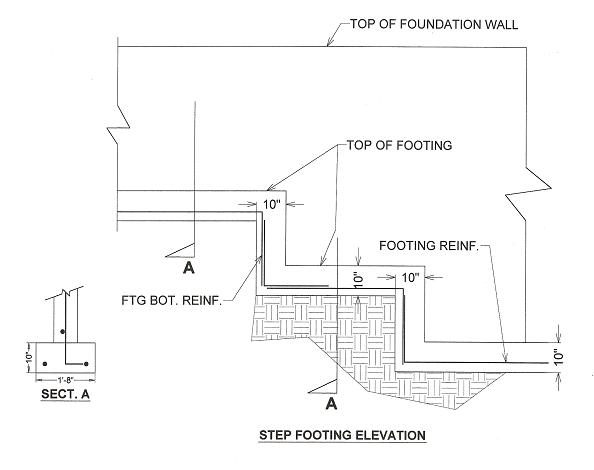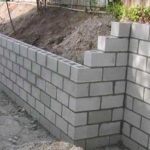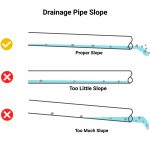A stepped footing provides extreme support to structures on non-flat terrains as well as a flat surface for construction. In this article, you will review the purpose of stepped footings, a stepped footing plan, and compare advantages and disadvantages.
Why Stepped Footings?
When foundation is poured on a construction site, it serves as a base layer of support and protection for for the structures to come. Generally, workers find it best to pour foundation on flat surfaces in order to provide the best results. However, sometimes a flat surface is not available. In this scenario, stepped footings provide a great way to ensure a solid foundation with a slopy terrain by distributing the load evenly across the slope.
Stepped footings also help tremendously in preventing soil erosion and potential landslides. By building a stepped footing that matches the contours of the slope, the structure will have less impact on the surrounding soil and can prevent future erosion from occurring.
Lastly, stepped footings help lower excavation prices significantly. When building on a sloped site, excavation for a traditional shallow footing can be expensive and difficult. A stepped footing can reduce excavation costs as it is built in stages, only excavating as much as needed for each step.
A Stepped Footing Plan
A stepped footing plan is a thoroughly detailed drawing that shows the design and layout of a stepped foundation for a building or structure. The plan typically consists of the following elements:
- The layout of the building or structure. The plan will show the location and dimensions of the building or structure, including the location of the walls, columns, and other load-bearing elements.
- The contours of the site. The plan will show the existing slope and contours of the site, as well as the location and dimensions of the stepped footings.
- The dimensions and layout of the stepped footings. The plan will show the dimensions and layout of the stepped footings, including the width, depth, and height of each step.
- The layout of the retaining walls. If the stepped footing is used as a retaining wall, the plan will show the location and dimensions of the retaining walls, including the height and thickness of the walls.
- The reinforcement details. The plan will show the details of the reinforcement used in the stepped footings, including the size and spacing of the rebars.
- Construction details. The plan will include details on how the stepped footing will be constructed. This includes the type of materials to be used, the method of excavation, and the sequence of construction.
- Drainage details. The plan will show the details of the drainage system that is used to prevent water from penetrating the stepped footing.
- Notes and specifications. The plan will include any notes and specifications that are necessary for the construction of the stepped footing. This includes the load-bearing capacity, soil type and compaction requirements

Advantages and Disadvantages
When working with non-flat terrains, stepped footings are the most effective way of laying foundation. This method provides many perks that allows workers to provide a strong, quick, and cost-efficient foundation process.
Advantages of Stepped Footings:
- Stability on sloped or uneven ground. Stepped footings can provide a stable base for a building or structure by distributing the load evenly across the slope.
- Erosion control. By building a stepped footing that matches the contours of the slope, the structure will have less impact on the surrounding soil and can prevent erosion and landslides from occurring.
- Cost-effective. Stepped footings can reduce excavation costs as they are built in stages, only excavating the amount needed for each step.
- Flexibility: Stepped footings can be adapted to a variety of site conditions, including small or irregularly-shaped lots.
- Aesthetics. Stepped footings can be used as a design feature, creating a terraced landscape that blends in with the natural surroundings.
However, some drawbacks can also come with the technique. Disadvantages of stepped footings include:
- Complex design. The design of stepped footings can be complex and may require the services of a structural engineer.
- Increased construction time. Stepped footings can take longer to construct than traditional shallow footings, as they are built in stages and require excavation.
- Increased cost. Stepped footings may be more expensive to construct than traditional shallow footings, due to the increased complexity and time required.
- Maintenance. Stepped footings may require more maintenance than traditional shallow footings, especially if they are used as a retaining wall.
- Risk of water infiltration. Stepped footings are more susceptible to water infiltration than traditional shallow footings if not properly designed and constructed.



